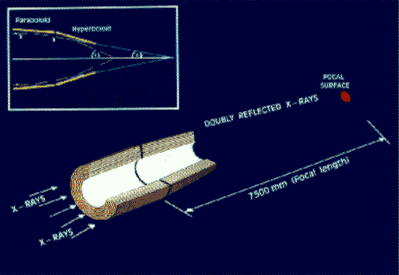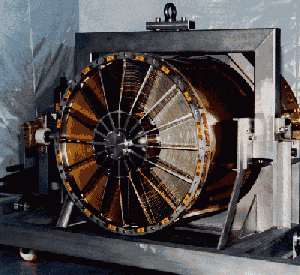

Because of their high energy, X-Rays are not reflected from the surface of a mirror as is light unless they are incident at a large angle so that they just graze the surface, Otherwise they simply penetrate or are absorbed by the mirror. However, if the angle of incidence is large enough, they will be reflected in the normal way. This makes it possible to focus the X-rays in an X-ray telescope. A series of mirrors is placed parallel to the direction of incoming radiation, and the X-rays are focused onto the detector as shown in this animation:

The XMM telescopes are called Wolter telescopes, after the person who
invented their
design principle, which is
the X Ray equivalent of the Cassegrain design
which is used in optical telescopes. Because of the small
grazing angle, each mirror does not contribute much to the collecting
area of the telescope so many mirrors are used in parallel. They are
made by electroforming thin Nickel shells onto highly polished
mandrels, each having a parabolic and a hyperbolic section. After the
shells are stripped off the mandrel, 58 of them are then mounted and
aligned concentrically into each of the three mirror modules to form a
telescope.

The large number of shells and their large size give XMM the largest
collecting area of any X ray observatory ever built whilst still
maintaining good angular resolution and resolving power.

